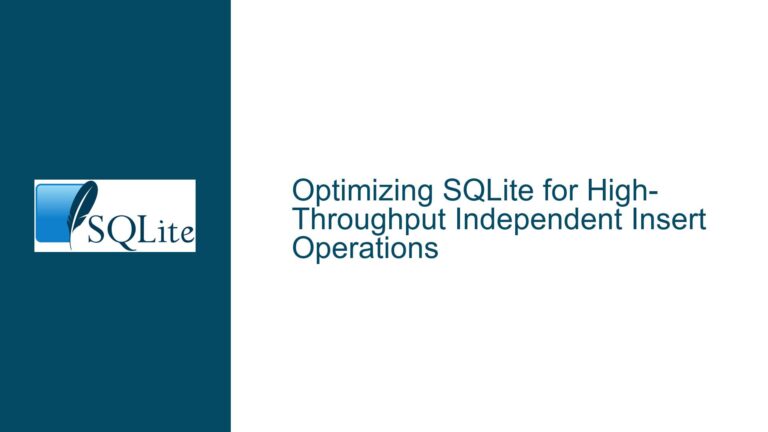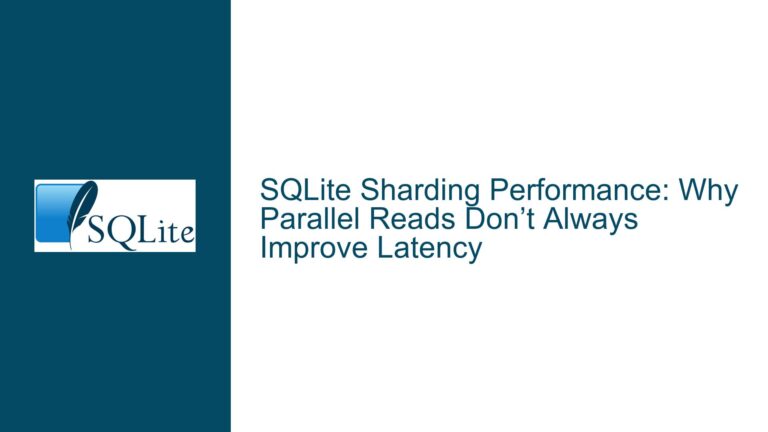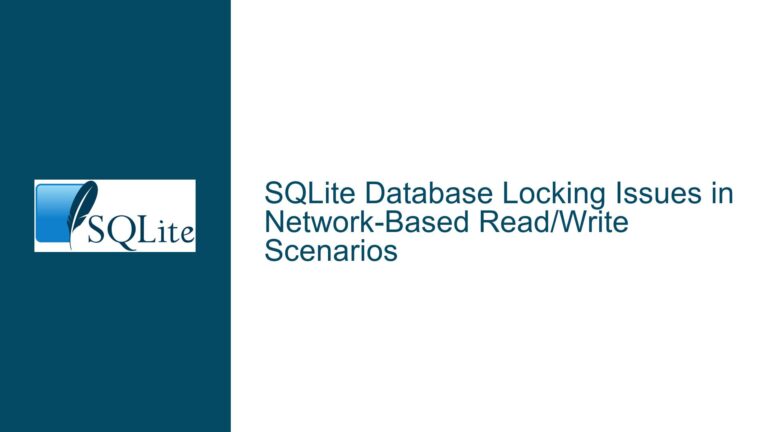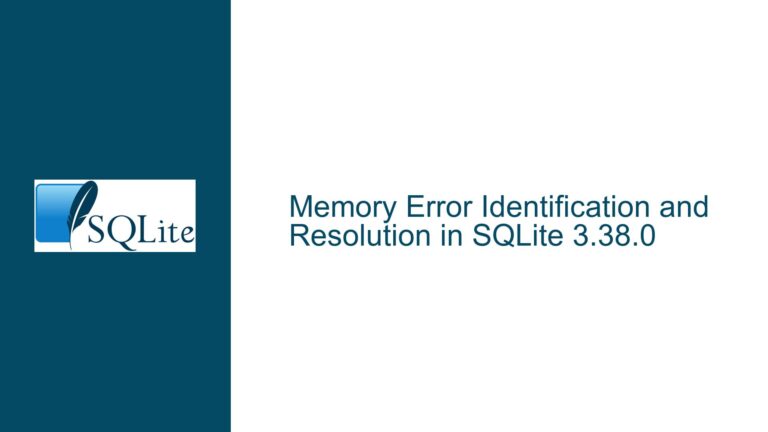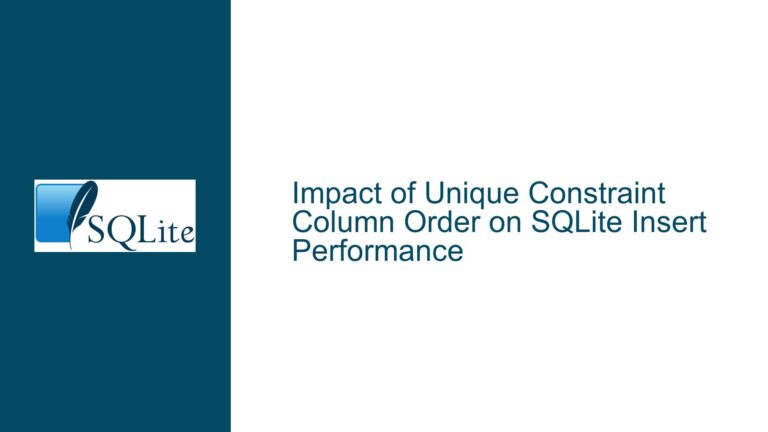SQLite Journal Files and Locking Mode Behavior
Journal File Persistence with PRAGMA Locking_Mode=EXCLUSIVE
When working with SQLite databases, particularly in scenarios where PRAGMA locking_mode=EXCLUSIVE is applied, a journal file with the same name as the database but with a .journal extension may appear. This file is used to ensure the Atomicity, Consistency, Isolation, and Durability (ACID) properties of the database transactions. The journal file contains before-images of modified pages, allowing the database to roll back transactions if necessary. Under normal circumstances, the journal file is temporary and should be deleted once the transaction is committed or rolled back, and the database connection is properly closed.
However, in some cases, the journal file may persist even after the session is terminated. This behavior can occur due to several reasons, such as an improper termination of the session, a crash, or a deliberate configuration setting. The persistence of the journal file can lead to confusion, especially when moving the database to another location, as the journal file must be moved along with the database to maintain consistency.
Causes of Persistent Journal Files in SQLite
The persistence of the journal file in SQLite can be attributed to several factors. One common cause is the improper termination of the database session. If the session is terminated abruptly, such as through a crash or a forced shutdown, the journal file may not be deleted. This is because the database engine did not have the opportunity to clean up the journal file before the session ended.
Another cause is the use of PRAGMA locking_mode=EXCLUSIVE. When this mode is enabled, the journal file may not be deleted immediately after a transaction is committed. Instead, the journal file may be retained and its header overwritten with zeros as an optimization. This behavior is similar to setting journal_mode=persist, where the journal file is not deleted but rather truncated. However, the journal file should still be deleted when the database connection is properly closed.
Additionally, the size of the journal file can sometimes exceed the size of the database file itself. This is because the journal file contains before-images of all modified pages during a transaction. The size of the journal file can impact query execution times, as the database engine needs to manage both the database file and the journal file simultaneously. However, this impact is generally minimal and is a necessary trade-off for ensuring data integrity.
Managing Journal Files and Ensuring Proper Database Closure
To manage journal files effectively and ensure they are properly deleted, it is important to follow best practices when working with SQLite databases. One key practice is to ensure that the database connection is properly closed after all transactions are completed. In the SQLite Command Line Interface (CLI), this can be done by exiting the CLI using the .exit command or by sending an End-of-File signal (Control-Z on Windows or Control-D on Linux). If the CLI is terminated abruptly, such as with a Control-C signal, the journal file may not be deleted.
Another important consideration is the use of PRAGMA journal_mode. By default, SQLite uses journal_mode=delete, which deletes the journal file after each transaction. However, when locking_mode=EXCLUSIVE is enabled, the behavior may change to journal_mode=persist, where the journal file is not deleted but rather truncated. To ensure that the journal file is deleted after each transaction, you can explicitly set journal_mode=truncate. This will release the disk space used by the journal file after each transaction commit.
If you need to move the database to another location and a journal file is present, it is crucial to move the journal file along with the database. This ensures that the database remains consistent and that any pending transactions can be properly resolved when the database is reopened. Failure to move the journal file can result in data corruption or loss.
In cases where the journal file size is a concern, you can use the PRAGMA journal_size_limit to limit the maximum size of the journal file. This can help prevent the journal file from growing too large and consuming excessive disk space. However, it is important to note that limiting the journal file size may impact the database’s ability to roll back large transactions, so this setting should be used with caution.
Finally, it is worth noting that the journal file is not the only type of temporary file that SQLite may create. Other temporary files, such as write-ahead log (WAL) files or temporary indices, may also be created depending on the database configuration and operations being performed. These files should be treated similarly to the journal file and moved along with the database if necessary.
In summary, the persistence of the journal file in SQLite can be managed by ensuring proper database closure, configuring the appropriate journal mode, and being mindful of the journal file size. By following these best practices, you can maintain the integrity of your SQLite databases and avoid potential issues related to journal file management.
| Key Consideration | Description |
|---|---|
| Proper Database Closure | Ensure the database connection is properly closed to delete the journal file. |
| PRAGMA journal_mode=truncate | Use this setting to delete the journal file after each transaction commit. |
| Moving Database with Journal File | Always move the journal file along with the database to maintain consistency. |


